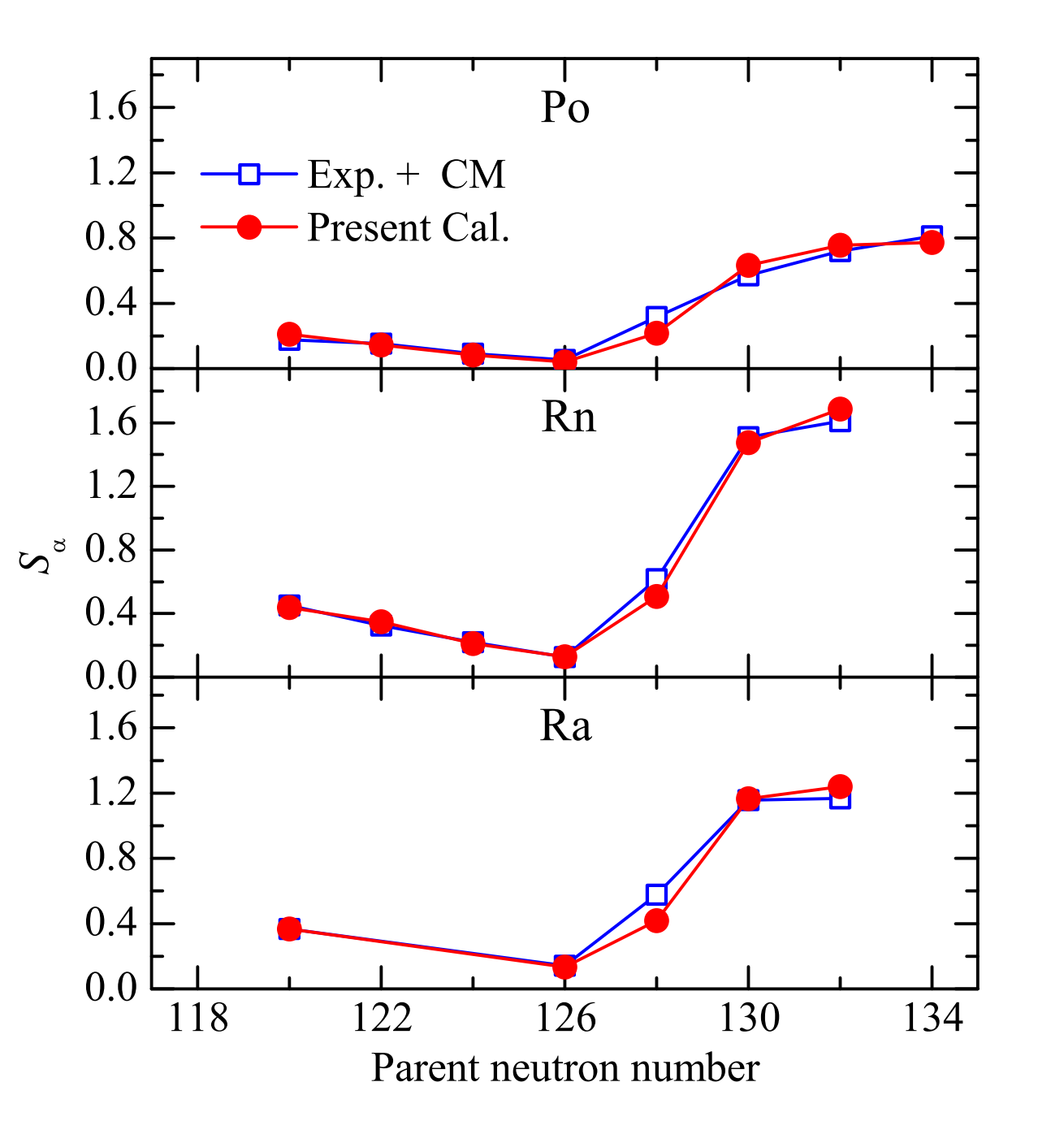Scientists Establish a New Model of α-cluster Formation in Heavy α-emitters
As one of the most important decay modes for heavy and superheavy nuclei, α-decay was regarded as a quantum-tunneling effect firstly in the pioneering works of Gamov, Condon and Gurney in 1928, which provided a significant evidence supporting the probability interpretation of quantum mechanics in the early stage of nuclear physics.
However, to understand how the α-cluster forms and how to calculate accurately the formation probability Sα microscopically remain long-standing problems for nuclear physicists, which have attracted considerable interest continuously.
To address this difficulty, the researchers at the Institute of Modern Physics (IMP) of the Chinese Academy of Sciences (CAS) and their collaborators have established a new model—multistep model, and calculated the corresponding formation probability of some typical α-emitters.
The multistep model is completely different from other previous ones. Researchers introduced the intermediate configuration (IC) with mass number A to characterize which levels donate the complete four nucleons for the α-formation. The IC jumps to daughter+(2n-2p) state, then the four particles automatically assemble into an α-particle finally.
Researchers assumed that the formation probability of the α-cluster is identical to that of the daughter nucleus, and summed over all pathways through different ICs to eventually get the α-particle formation probability.
The single-particle properties can be calculated by density functional theory without adjustable parameters. Researchers concentrated on the even-even Po, Rn and Ra isotopes with spherical or near-spherical shapes, because their α-decays can serve as an optimal testing ground to examine the model.

Fig.1. Schematic illustration of the physical picture for an α-cluster formation in the multistep model through one of many pathways. (Image by Dong Jianmin)
Researchers then tested and demonstrated the reliability of the multistep model. They found that by including the predicted formation probability Sα, the agreement between the theoretical half-lives and the available experimental data can be improved dramatically.
Furthermore, the empirical formation probability Sα was extracted by combining the theoretical penetration probability and the experimental half-life. It was shown that the formation probabilities predicted by the multistep model can reproduce the empirical values successfully, especially the irregular behavior around shell closure.

Fig.2. Calculated formation probability within the multistep model for the Po, Rn and Ra isotopes, compared with those extracted by using the experimental half-lives in combination with the theoretical penetration probabilities. (Image by Dong Jianmin)
Based on the new model, researchers calculated the formation probabilities of several superheavy nuclei. Combining the experimentally measured α-decay properties, they suggested the probable proton-magic nature of Z=120. The future measurements with a much higher accuracy for these nuclei together with their isotopes are encouraged, which would pin down the proton magic number eventually.
Published in Physics Letters B, the present work may help scientists to get more information of superheavy nuclei, and provide a distinctive way to clarify the neutron-proton pairing properties in N≈Z nuclei.
This work was supported by the Strategic Priority Research Program of CAS, the National Natural Science Foundation of China, and the Youth Innovation Promotion Association of CAS.
Contact :
LIU Fang
Institute of Modern Physics
Email: fangliu@impcas.ac.cn


 甘公网安备 62010202000713号
甘公网安备 62010202000713号


